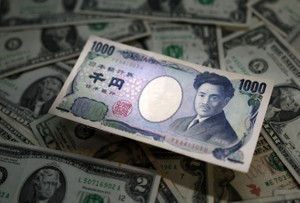THE ASAHI SHIMBUN
January 5, 2024 at 18:23 JST
NOTO, Ishikawa Prefecture--Tsunami from the earthquake that struck the Noto Peninsula shocked many residents, including a 41-year-old man celebrating New Year's Day at his parent's home here with relatives.
“I never dreamed that tsunami would hit here,” the man said.
The tsunami devastated the Shiromaru district of Noto, Ishikawa Prefecture, which faces a bay off the eastern coast of the peninsula.
Traces of the tsunami were left as high as 2 meters at the main house of the man's parents, which was flooded with dirt. The detached house was entirely washed away, including the foundation.

When the magnitude-7.6 temblor hit at 4:10 p.m., the man rushed to higher ground behind his parents’ home with neighbors.
The stairway, marked with an “evacuation” sign, was installed after the 2011 Great East Japan Earthquake, which spawned giant tsunami and claimed thousands of lives.
When the man looked down on the settlement through gaps in the trees, he saw walls of waves approaching the shore.
He heard the tsunami crashing ahead as well as automobile horns beeping.
“I thought I had heard those sounds somewhere and I remembered it was footage of the tsunami generated by the Great East Japan Earthquake,” he said.
“I never expected that something like this could happen to me.”
Seiji Fuwa, who operates an inn in another part of Noto, urged neighbors to evacuate to higher ground.
But many elderly residents refused to go, saying they did not want to leave their homes.
Although the Noto Peninsula has experienced frequent earthquakes over the past few years, people had grown accustomed to the fact that tsunami had not come.
“We thought tsunami was someone else’s problem and the entire community lacked a sense of crisis,” said Fuwa, 51.
Yoichiro Echigo, a fisherman in the neighboring city of Suzu, received a telephone call from his son, who lives in the prefectural capital of Kanazawa, immediately after the earthquake hit.
“A tsunami warning has been issued,” the son said with a sense of urgency. “You have to get out of there as soon as possible.”
Echigo, 70, was skeptical, but he left home with his wife, Hiroko, 67.
The couple soon abandoned their vehicle because the earthquake created bumps in the road. They fled for higher ground, avoiding collapsed homes and other debris.
A river was seen flowing upstream due to the tsunami.
“I never thought tsunami would actually come here,” Echigo said.
Toshiyuki Umeki, who was born and raised in Suzu, noticed something unusual when he looked to the sea from the higher ground where he evacuated.
The tide receded to around Mitsukejima island, a sightseeing spot about 180 meters offshore, exposing the seafloor through shallow waters.

It was the first time that Umeki, a 49-year-old company employee, had seen such a sight.
He was convinced that tsunami would be arriving in no time, recalling footage of the Great East Japan Earthquake and tsunami.
About five minutes later, white waves surged along the coastline from south to north.
“The damage was overwhelming and rescue activities have fallen short,” Umeki said. “Our town may never be the same.”
An analysis of aerial photographs by Yoshiya Iwasa, an assistant professor of physiography at Oita University, suggested that tsunami reached a residential area in Suzu about 3 meters above sea level.




















Stories about memories of cherry blossoms solicited from readers
Cooking experts, chefs and others involved in the field of food introduce their special recipes intertwined with their paths in life.
A series based on diplomatic documents declassified by Japan’s Foreign Ministry
A series on the death of a Japanese woman that sparked a debate about criminal justice policy in the United States
A series about Japanese-Americans and their memories of World War II
Here is a collection of first-hand accounts by “hibakusha” atomic bomb survivors.